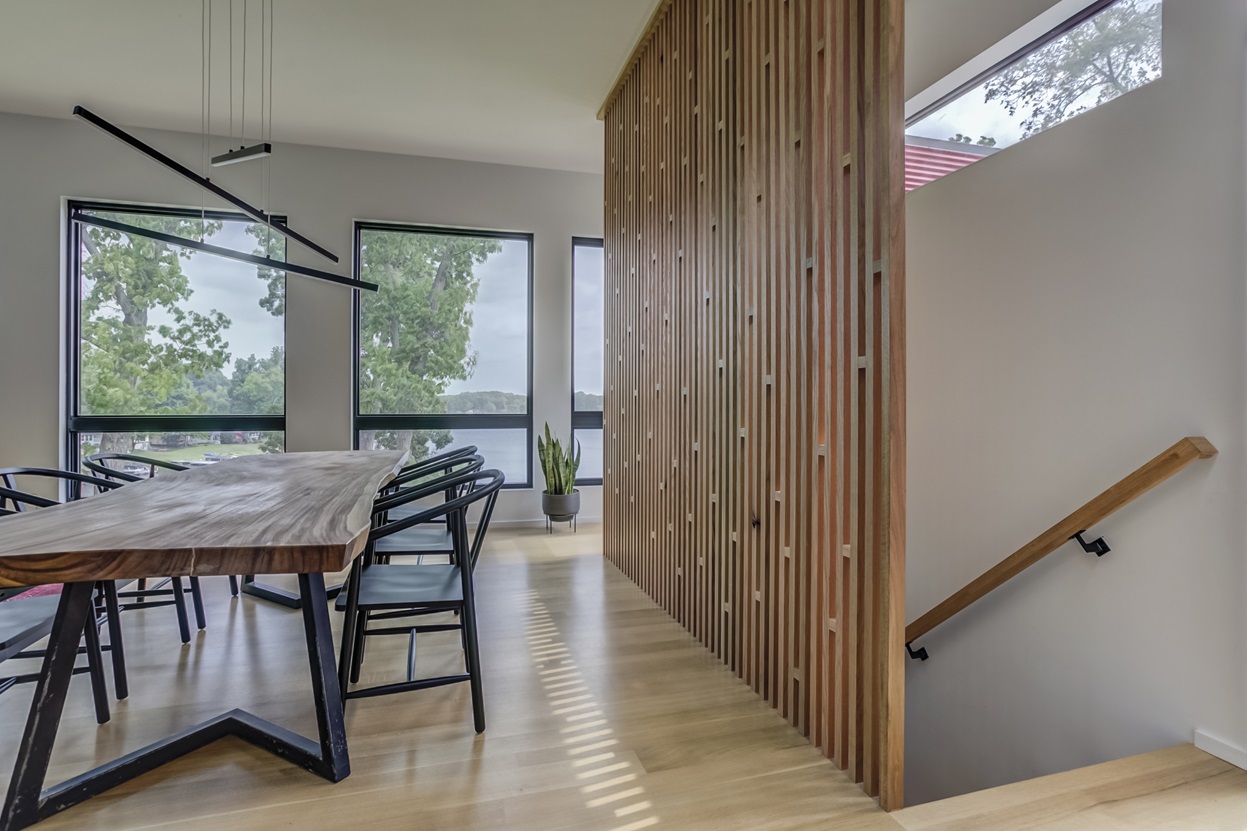If you’re building a new home or an addition in Ann Arbor, you’ll be required to show that you’re managing rainwater appropriately. As a homeowner, you might never think about what happens to the rainwater on your property.
In fact, homes and buildings have a significant impact on the way storm water affects nearby streams and rivers, as well as properties and city infrastructure.
Rainwater Management Requirements in Ann Arbor
Developed properties have impervious surfaces — for example, driveways, rooftops, patios, or storage areas. Those surfaces prevent rain water from draining into the ground. Instead, they cause water to run off into the stormwater system in greater quantities, and at an increased rate of flow.
In Ann Arbor, all stormwater flows, untreated, to the Huron River and its tributaries. As a result:
- More pollutants are carried through the stormwater system and into the Huron River and its tributaries.
- Flooding occurs more frequently.
- Erosion is more increased, particularly along river banks.
- Property damage occurs.
To help protect our natural resources, the City of Ann Arbor requires all homeowners who build a new impervious area to submit an impervious area worksheet. This worksheet calculates the square footage of impervious surface. If the area is greater than 200 square feet, the city requires a management plan for storm water runoff.
Every home building or renovation project that adds 200 square feet of impervious surface will need to develop a water management plan. There are several ways to do this:
- Build a rain garden
- Install a cistern or a dry well to collect water
- Install a rain barrel to collect runoff from your roof for later use in your garden or around the house
- Become a RiverSafe Homes partner
Rain gardens are growing in popularity in Ann Arbor, adding an attractive and natural-looking landscaping feature to your property.
What Is a Rain Garden?
Rain gardens allow water runoff to enter the soil instead of the storm drain. A rain garden is a depression in the ground that allows water to collect and pool. Deep-rooted native vegetation is planted in the depression, which allows the soil to absorb excess rainwater runoff over time. Water is routed to the garden and filtered naturally by the plants and soils, removing pollutants as the water makes its way into the ground and back towards rivers and tributaries.
Rain gardens require careful planning, but anyone can install one. There are several classes offered in Ann Arbor to give you everything you need to know about water management and building a rain garden.
Misconceptions About Rain Gardens
Some homeowners are hesitant to install a rain garden on their property, because they have misconceptions about them. Here are some common misconceptions.
Standing water in rain gardens breeds mosquitoes
Because rain gardens are designed to drain in less than a day or two, there isn’t enough time to create a breeding environment for mosquitoes. In fact, you may see a lower mosquito population, because the land you’re using for a rain garden often has improved drainage..
You can only use wetland plants
Most of the time, a rain garden is dry. This allows you to select a wide variety of plants that tolerate dry soil. Because Michigan summers often go through periods of drought, it’s important to use vegetation that will thrive during extended dry seasons.
Rain gardens look weedy
Every rain garden is different. Unmanaged gardens may look weedy, but an inspired design approach can create some stunning gardens that enhance your property and complement the aesthetics of your home. Rain garden classes can help you plan a beautiful garden that will delight you and your neighbors.
They’re expensive to build
With a typical cost of $3.00 to $10.00 per square foot, rain gardens are very affordable. Costs can increase depending on soil conditions, plant varieties, and if you hire a landscaper
Delightful Benefits of a Rain Garden
While a rain garden is an innovative solution for water management, it also provides other benefits that homeowners enjoy:
- Removes standing water in your yard
- Reduces mosquito breeding
- Increases beneficial insects
- Creates a natural habitat for birds and butterflies
- Enhances the beauty of your property and your neighborhood
- Increases enjoyment of your garden and your home
How to Start a Rain Garden
There are several classes available to people in the Ann Arbor and Washtenaw County areas. These classes will walk you through the process of designing and creating a rain garden, and they will provide all the resources you need to get started on your own.
You can also find resources on water management on the City of Ann Arbor website.
Transforming your living space is anything but trivial. If you value nuanced design that will make your house feel like a home, and a collaborative partner throughout the design and build process, we’ll guide you from start to finish.



